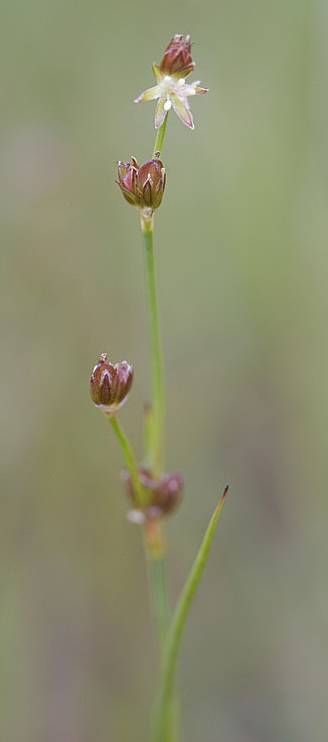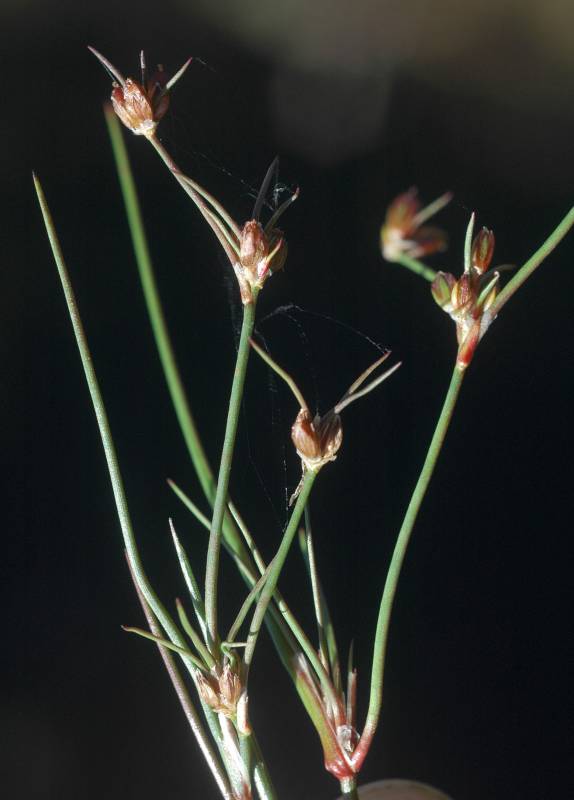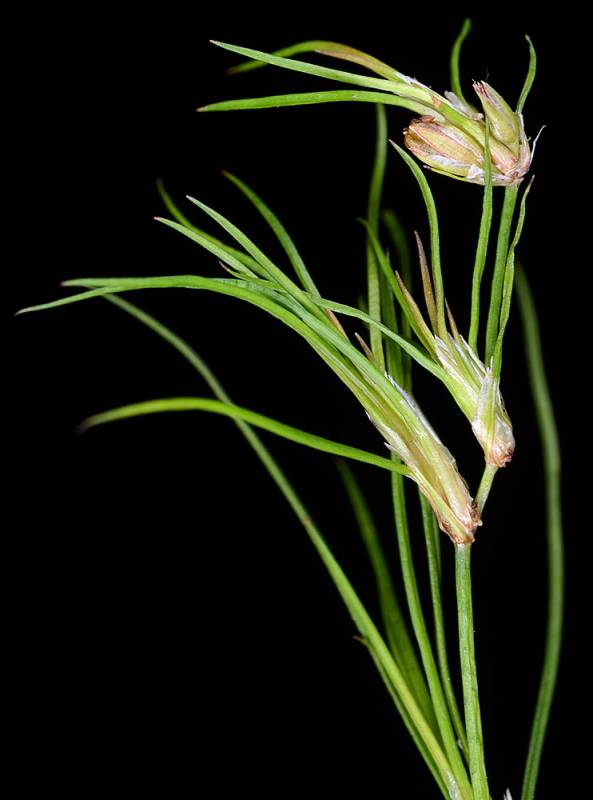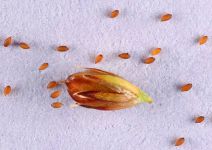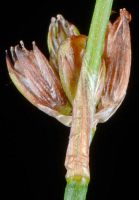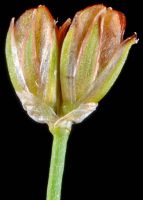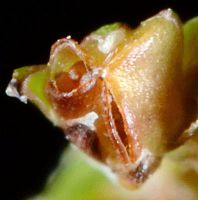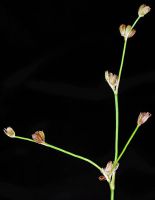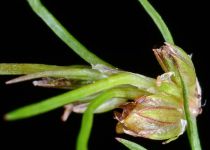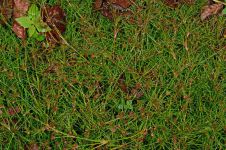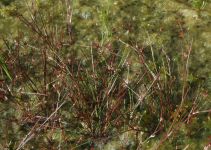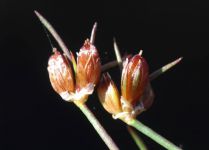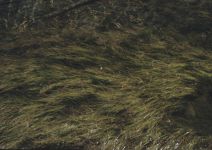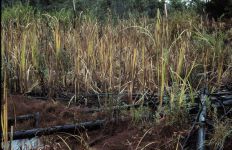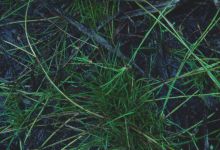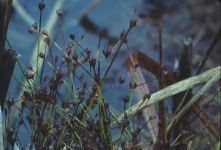Distribution: Occurring chiefly west of the Cascades crest in Washington; Alaska to California.
Habitat: Often in shallow water, peaty or sandy shores, marshes, and bog pools.
Flowers: July-September
Origin: Native
Growth Duration: Perennial
Conservation Status: Not of concern
Pollination: Wind
Perennial, often with floating leaves and stems, the stems tufted along slender rhizomes, 1-3 dm. tall, more or less decumbent and rooting at the nodes.
Leaves alternate, the blades semi-terete with prominent partitions, from firm and erect to filiform and lax; leaf bases sheathing, forming auricles 1-2 mm. long.
Heads 2-6 , 6-10 mm. broad, mostly 3- to 10-flowered, on loose peduncles, some of the flowers with short pedicles; perianth 3-4 mm. long, light to dark brown, the 6 segments subequal, narrowly lanceolate, pointed; stamens 3 or 6.
Capsule cylindric, narrowed to a short beak 1-1.5 mm. longer than the perianth.
Publication: Transactions of the Academy of Science of St. Louis 2: 461-462. 1868.
Juncus paucicapitatus Buchenau
PNW Herbaria: Specimen records of Juncus supiniformis in the Consortium of Pacific Northwest Herbaria database
WA Flora Checklist: Juncus supiniformis checklist entry
OregonFlora: Juncus supiniformis information
E-Flora BC: Juncus supiniformis atlas page
CalPhotos: Juncus supiniformis photos

